#and as a result it means we are more likely to see wild species like this on our lawns
Explore tagged Tumblr posts
Text
Look at this tortoise eating my neighbour's grass.
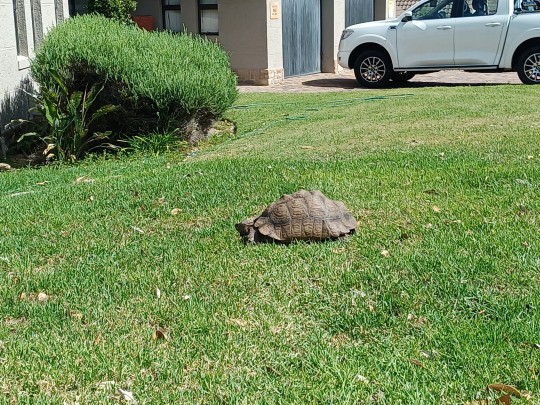
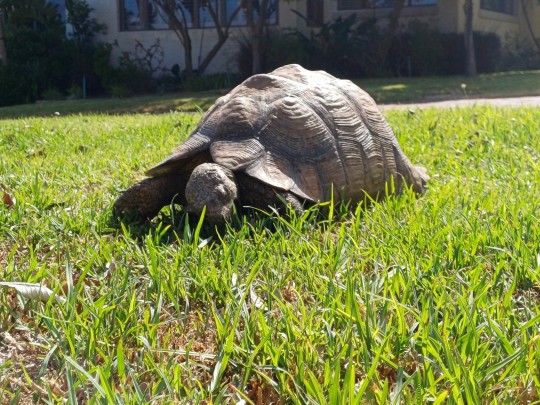

#animals#tortoise#reminder my country's version of a golf estate is very different to the US#and as a result it means we are more likely to see wild species like this on our lawns#because golf estates in my country are part golf. part house. part nature conservation#anyway look at this old guy go at that grass
49 notes
·
View notes
Text

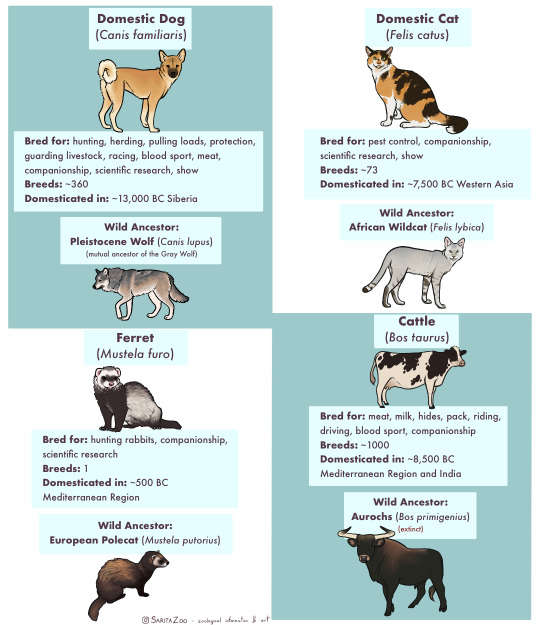


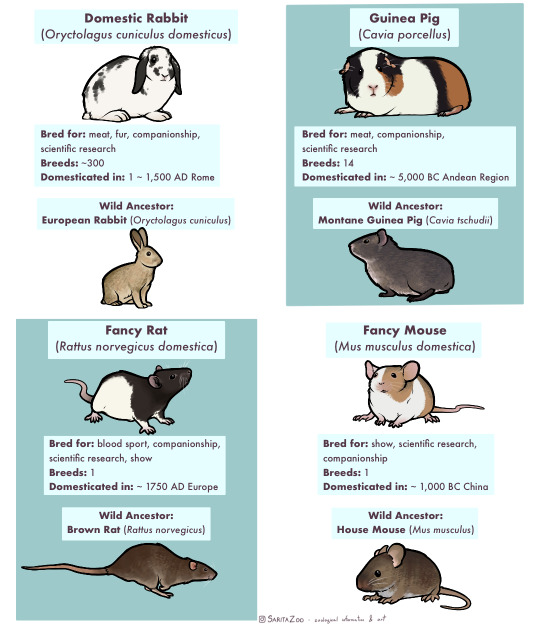
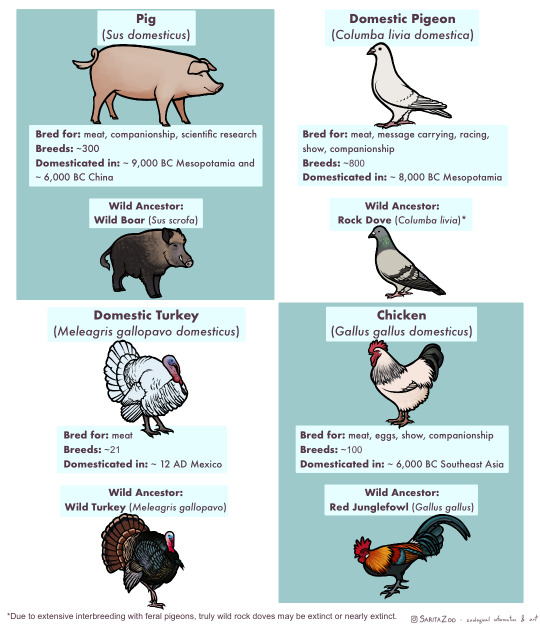
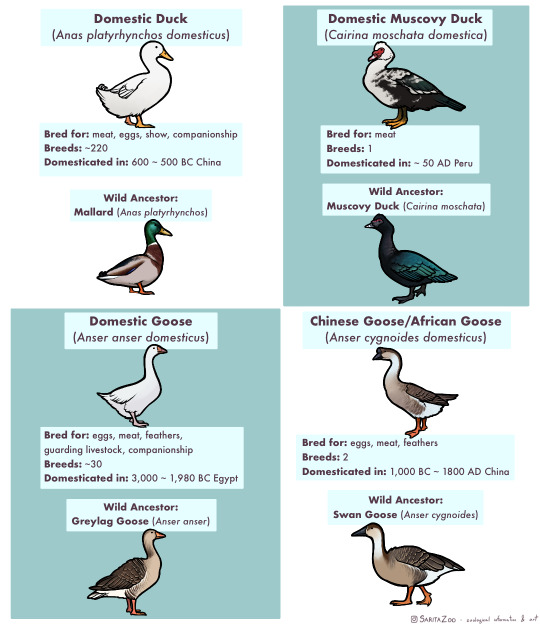
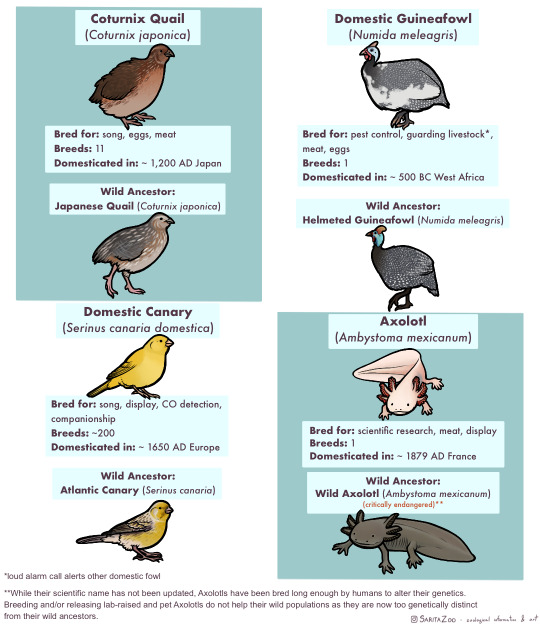
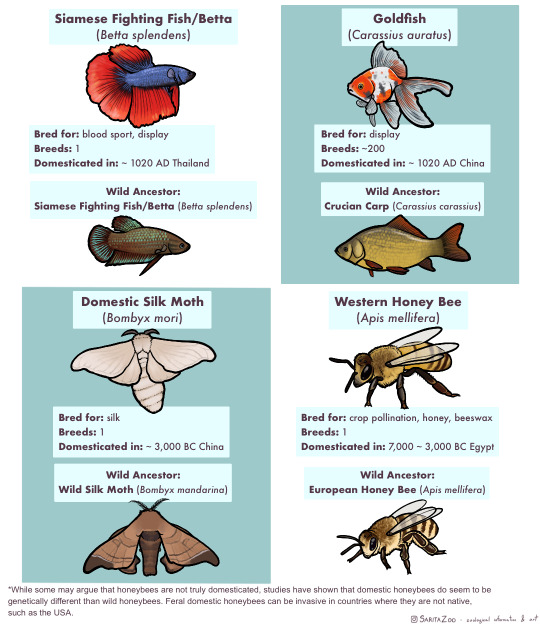

Phew. This one took, uh… a bit longer than expected due to other projects both irl and art-wise, but it’s finally here. The long-awaited domestic animal infographic! Unfortunately, I didn’t have enough space to cover every single domestic animal (I’m so sorry, reindeer and koi, my beloveds) but I tried to include as many of the “major ones” as possible.
I made this chart in response to a lot of the misunderstandings I hear concerning domestic animals, so I hope it’s helpful!
Further information I didn’t have any room to add or expand on:
🐈 “Breed” and “species” are not synonyms! Breeds are specific to domesticated animals. A Bengal Tiger is a species of tiger. A Siamese is a breed of domestic cat.
🐀 Different colors are also not what makes a breed. A breed is determined by having genetics that are unique to that breed. So a “bluenose pitbull” is not a different breed from a “rednose pitbull”, but an American Pitbull Terrier is a different breed from an American Bully! Animals that have been domesticated for longer tend to have more seperate breeds as these differing genetics have had time to develop.
🐕 It takes hundreds of generations for an animal to become domesticated. While the “domesticated fox experiment” had interesting results, there were not enough generations involved for the foxes to become truly domesticated and their differences from wild foxes were more due to epigenetics (heritable traits that do not change the DNA sequence but rather activate or deactivate parts of it; owed to the specific circumstances of its parents’ behavior and environment.)
🐎 Wild animals that are raised in human care are not domesticated, but they can be considered “tamed.” This means that they still have all their wild instincts, but are less inclined to attack or be frightened of humans. A wild animal that lives in the wild but near human settlements and is less afraid of humans is considered “habituated.” Tamed and habituated animals are not any less dangerous than wild animals, and should still be treated with the same respect. Foxes, otters, raccoons, servals, caracals, bush babies, opossums, owls, monkeys, alligators, and other wild animals can be tamed or habituated, but they have not undergone hundreds of generations of domestication, so they are not domesticated animals.
🐄 Also, as seen above, these animals have all been domesticated for a reason, be it food, transport, pest control, or otherwise, at a time when less practical options existed. There is no benefit to domesticating other species in the modern day, so if you’ve got a hankering for keeping a wild animal as a pet, instead try to find the domestic equivalent of that wild animal! There are several dog breeds that look and behave like wolves or foxes, pigeons and chickens can make great pet birds and have hundreds of colorful fancy breeds, rats can be just as intelligent and social as a small monkey (and less expensive and dangerous to boot,) and ferrets are pretty darn close to minks and otters! There’s no need to keep a wolf in a house when our ancestors have already spent 20,000+ years to make them house-compatible.
🐖 This was stated in the infographic, but I feel like I must again reiterate that domestic animals do not belong in the wild, and often become invasive when feral. Their genetics have been specifically altered in such a way that they depend on humans for optimal health. We are their habitat. This is why you only really see feral pigeons in cities, and feral cats around settlements. They are specifically adapted to live with humans, so they stay even when unwanted. However, this does not mean they should live in a way that doesn’t put their health and comfort as a top priority! If we are their world, it is our duty to make it as good as possible. Please research any pet you get before bringing them home!
#SaritaZoo#my art#domestic animals#domestication#pets#dogs#cats#ferrets#cows#sheep#goats#bovids#horses#donkeys#camels#llamas#alpacas#rabbits#guinea pigs#rats#pet rats#pet mice#pigs#pigeons#turkeys#chickens#ducks#geese#quail#i ran out of tags rip
33K notes
·
View notes
Text
‘Ferrari in a junkyard’: Mules sold at auction are rare, endangered horses

https://washingtonpost.com/climate-environment/2024/08/09/przewalskis-horses-rescued-dna-shrek-fiona/
Hannah Huckabay regularly combs livestock auctions online for horses she can rehabilitate and train at her Colorado ranch. But when she saw a video in February of a mule for sale in Kansas, she could hardly believe what she was seeing.
The stocky animal’s short black mane shot straight up like a mohawk, and its white belly stood out against its tan coat. As it nervously paced in its corral, Huckabay said it bore a striking resemblance to Przewalski’s horse, a critically endangered species she’d learned about while studying equine science.
“I was like, ‘There is no way. That is not a mule,’” Huckabay recalled thinking. “That’s a purebred Przewalski.”
Such a find would be incredibly rare. Once extinct in the wild, around 2,500 Przewalski’s horses remained worldwide as of 2022. They’re native to Mongolia and in June, seven were reintroduced to nearby Kazakhstan as part of an effort to return them to their natural habitats. They are the only truly wild horse remaining (mustangs are feral horses).
But scientists say Huckabay’s hunch appears to be correct. Hair samples from the animal Huckabay purchased - along with a second horse recently surrendered at a Utah sanctuary - were sent to Texas A&M University’s animal genetics lab. Both appear to be Przewalski’s horses, said Rytis Juras, the genetics lab’s director who tested both samples.
The hair test looks for genetic markers associated with different horse breeds to determine an animal’s likely ancestry. Unequivocally confirming that the horses are purebred Przewalski’s and not hybrids would require advanced blood tests that are expensive and would mean sedating the equines.
The blood tests look at the number of chromosomes in a horse’s cells - 66 in a purebred Przewalski, versus 64 in a common horse or 62 in a donkey. An even more advanced version could sequence the horse’s entire genome.
But Juras and two other scientists who reviewed the findings said the hair-test results are reliable.
“If I would have gotten it from a zoo … that would be one thing,” Juras said of receiving the samples. But two random tests with Przewalski’s results were “surprising and a little bit disturbing,” he said. “This is weird.”
How the horse Huckabay found - and the second in Utah - ended up in livestock auctions is a mystery, said Christopher Faulk, a professor of animal science at the University of Minnesota who has studied Przewalski’s horse genetics and also reviewed the DNA results.
“Someone had to have known what they were, they don’t just appear out of anywhere,” Faulk told The Post. “Especially to have been disposed of in that way is even weirder,” he said, since livestock that aren’t purchased at auction can end up in slaughterhouses.
“That’s like finding a Ferrari in a junkyard,” he added.
Huckabay bought the animal for $1,375 in February and, after three weeks in quarantine, the ragged and underweight animal sold as a mule arrived at her ranch outside Denver.
Seeing its features in-person left her even more convinced it was a Przewalski’s horse, she said. With a large clunky head and stiff black mane, her daughter said the horse was so ugly, he was cute, Huckabay recalled. They named him Shrek, after DreamWorks’s beloved ogre.
After almost two months of helping Shrek acclimate, Huckabay’s daughter stumbled upon a video posted on June 9 from a sanctuary in Utah.
“Did we just have a Przewalski mare surrendered?!” the caption read.
Kelsey and Gunnar Bjorklund - who own the Lazy B Equine Rescue and Sanctuary in Utah - suspected their mare was also a Przewalski. But they had no idea there was a second possible Przewalski, saved from another auction.
The Bjorklunds’ horse was brought to their facility after being purchased for $35 in January at an auction in Utah, where she was advertised as a mule.
“It takes more money to get your nails done,” Kelsey said, adding that her previous owner decided to surrender the mare after she flunked out of a professional training program.
When the horse arrived and was unloaded from the trailer, “we were just in shock,” Gunnar said. It was clear the animal wasn’t a mule or a mustang, he said.
“Anyone getting possible Przewalski vibes!?” the Bjorklunds posted. “A true wild, endangered species of equine‼️ How cool would that be!”
In response to seeing the Bjorklunds’ viral video, Huckabay’s daughter posted her own videos of Shrek two days later. One got over 11 million views.
After coming across Shrek’s video, it was easy for the Bjorklunds to settle on a name for their mystery horse - Fiona, the princess-heroine from the Shrek movies.
The rescuers were stunned that two possible Przewalski’s horses could have surfaced almost simultaneously. The Endangered Species Act allows private ownership of endangered animals, but only with a permit, and under strict stipulations. The law prohibits the possession of illegally obtained endangered animals or their transport across state lines without permits.
The U.S. Fish and Wildlife Service declined to comment on whether officials are investigating the horses’ chain of custody.
Some livestock auctions have occasionally served as hubs for illicit trade in exotic animal species.
Because most Przewalski’s horses descend from only about a dozen surviving individuals, scientists closely manage breeding genetics for diversity. Compared to the feral mustang, Przewalski’s are more resilient, said Dolores Reed, a biologist who helps oversee a small herd of the endangered horses at the Smithsonian’s National Zoo and Conservation Biology Institute. Przewalski’s horses are built for the Mongolian steppe’s harsh climate, she said, adding, “they’re very tough,” and can be unpredictable.
There are about 100 Przewalski’s horses in U.S. zoos, Reed said.
Shrek and Fiona are adjusting to their new environments, their owners said. After keeping his distance from people and trotting in circles in his pen while stressed, Shrek has relaxed and moved to a larger field. He has bonded with two gentle mares and while he won’t accept treats from people’s hands, he loves when apples and carrots are left in his feed bucket, Huckabay said.
“He’s very piggy,” she said.
In Utah, Fiona has put on weight and made friends with a miniature mule and a quarter horse filly at the Bjorklunds’ sanctuary.
The rescuers wonder what would’ve happened if Shrek and Fiona hadn’t been saved. The endangered animals might’ve been sent to slaughter “and nobody would have known about it,” Gunnar said.
Huckabay and the Bjorklunds plan to care for the horses as long as needed, but said they’d prefer to see their rescued Przewalski’s move to a professional conservation program.
Shrek is happy on the ranch, but Huckabay said she’d rather see him with “a herd of his own.”
“That would be the best-case scenario,” she said.
#this is fucking insane#Przewalski’s horses#Przewalski’s horse#horses#colorado#animal protection#animal welfare#science#environment#nature#animals#usa#long post
556 notes
·
View notes
Text
Dandelion News - September 15-21
Like these weekly compilations? Tip me at $kaybarr1735 or check out my new(ly repurposed) Patreon!
1. A beam of hope for North America’s most endangered sparrow

“Dozens of conservationists, gathered some distance away to avoid spooking the skittish sparrows, celebrated the [release of the 1000th captive-raised sparrow] in an unprecedented recovery program that in only a few years has doubled the bird’s wild population, from a mere 80 five years ago to some 200 today. […] “What we have achieved is the best case scenario.””
2. U.S. overdose deaths plummet, saving thousands of lives

“"In the states that have the most rapid data collection systems, we’re seeing declines of twenty percent, thirty percent," said Dr. Nabarun Dasgupta, an expert on street drugs at the University of North Carolina. […] According to Donaldson, many people using fentanyl now carry naloxone, a medication that reverses most opioid overdoses. He said his friends also use street drugs with others nearby, ready to offer aid and support when overdoses occur.”
3. Propagated corals reveal increased resistance to bleaching across the Caribbean during the fatal heat wave of 2023

“”[… Y]oung corals bred for restoration are a lot more resistant to bleaching under extreme levels of heat stress than the prevailing corals on the reef." [… Unlike with the previous propagation strategy, fragmentation, e]very time a population reproduces, new offspring receive newly mixed sets of genes through recombination, making them different from their parent colonies and thus enabling adaptation.”
4. Habitat Management Helps At-Risk Butterflies
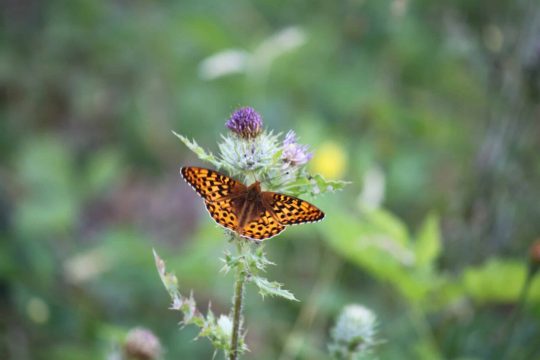
“For a number of at-risk butterflies in the United States, habitat management can play an important role in keeping them from going extinct. [… “In] places where people are actively engaged with ways to manage the habitat, the butterflies are doing the best,” said Cheryl Schultz, a professor of conservation biology at Washington State University[….]”
5. Study: Protecting the ocean helps fight malnutrition
“[The study] found that fish catches in coral reefs could increase by up to 20 percent by expanding sustainable-use marine protected areas — that is, areas where some fishing is allowed with restrictions[, … and] that sustainable-use marine protected areas have on average 15 percent more fish biomass than non-protected areas. […] “Allowing regulated fishing in marine protected areas can support healthy fish populations, while also having a positive impact on the quality of life of surrounding communities.””
6. [FWS] Advances Effort to Create Urban Conservation Footprint in Tucson
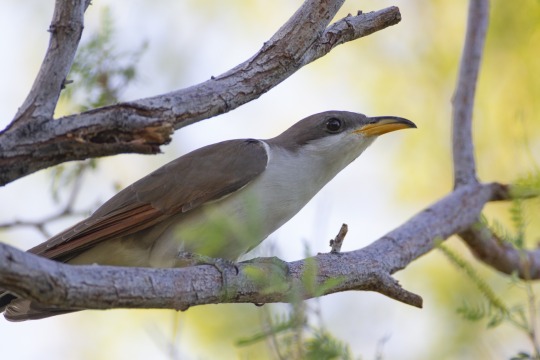
““We want to continue to work together to create an urban footprint to improve access to nature, conserve habitats, and improve air and water quality.” […] The area provides habitat for several federally listed species, including southwestern willow flycatcher, western yellow-billed cuckoo, and Mexican garter snake. If protected, the area will also help connect critical habitat for jaguar and Chiracahua leopard frog.”
7. ‘Exciting’ solar breakthrough means energy can be kept in sustainable batteries that don’t overheat

“The technology is based on a specially designed molecule of carbon, hydrogen and nitrogen that changes shape when it comes into contact with sunlight. These are common elements - providing an alternative to other technologies relying on scarce materials like lithium. […] A unique feature of the system is that the molecules also provide cooling in the photovoltaic cell[, which can store solar energy “for up to 18 years.”]”
8. Sea turtles make big comeback on sandy beaches at 2 British military bases in Cyprus

“[… The] number of nests surpass[ed] last year’s record count by nearly 25%, environmentalists said Tuesday. […] “The steep increase in turtle nests has been the result of a consistent, systematic ‘hands-off’ approach, together with enforcement efforts to minimize illegal, damaging activities on nesting beaches[….” D]aily patrols by volunteers ensure that aluminum cages set atop the nests remain in place to protect the turtles from predators like foxes and dogs.”
9. First ever photograph of rare bird species New Britain Goshawk
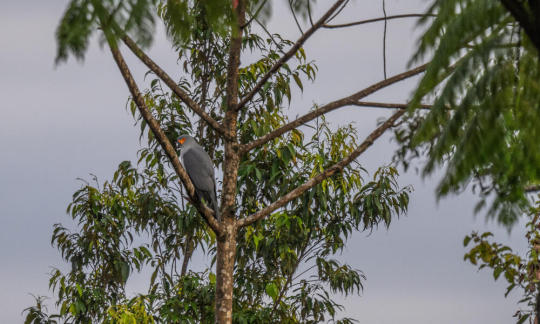
“The last documented scientific record of the bird is from 1969[….] Working closely with [“the Indigenous Mengen and Mamusi peoples”], WWF hopes to support local stewardship to safeguard the future of these incredible biodiversity hotspots through community-led conservation.”
10. Hospitals begin offering breakthrough radiation therapy for metastatic cancer tumors

“[First,] a patient is injected with a radioactive glucose (or sugar) tracer. The machine picks up the tracer in real time and in bright colors, [… then] reads a signal from the cancer cells breaking down the tracer. [… “The] machine is automatically and autonomously reacting and responding to those signals by shooting radiation back to their source[….]””
September 8-14 news here | (all credit for images and written material can be found at the source linked; I don’t claim credit for anything but curating.)
#hopepunk#good news#birds#endangered#endangered species#conservation#tw drugs#drugs#naloxone#coral#coral reef#coral bleaching#mexico#united states#vermont#butterflies#habitat#fish#malnutrition#fishing#food insecurity#arizona#nature#solar#solar energy#solar power#turtles#sea turtle#cancer#medicine
310 notes
·
View notes
Note
Growing up I lived in an area with a lot of cattle farming and I was very scared of the cows. Do you have any cool facts that will make me either more or less afraid of cows?
oh hmm let me think on that!
facts related to how to interact with cows so all parties feel and stay safe:
they have a very prey herd animal mentality. they want to move with their herdmates. they want to watch any potential threats like people and move away from them. they don't like loud or unfamiliar noises (they're sensitive souls. sometimes if i visit a dairy wearing waterproof coveralls where the cows are only used to people wearing cotton coveralls, just the whisper of waterproof pants rubbing against each other can spook them) or abrupt movements or going into areas they can't see well (and they have difficulty with depth perception due to their wide-set eyes for 300 degree vision, and with high-contrast, so going from sun into shade or vice versa can look like stepping into a white or black void for them and they don't like it)
based on this, we know the keys to low-stress cattle handling are consistency in how you interact with them, calmness (small movements, quiet words to let them know you're there), moving cows in groups big enough to have friends but small enough you can control the whole group without them milling around or the ones in front stopping and causing a traffic jam, and slowly moving them by just barely getting in their "bubble" of "whoa, you're a little too close for comfort, i'm going to move in the other direction" without ever getting into their "YIKES RUN AWAY FROM THIS THING" bubble
the last point involves understanding pressure and flight zones and point of balance:
from Mississippi State University Extension:
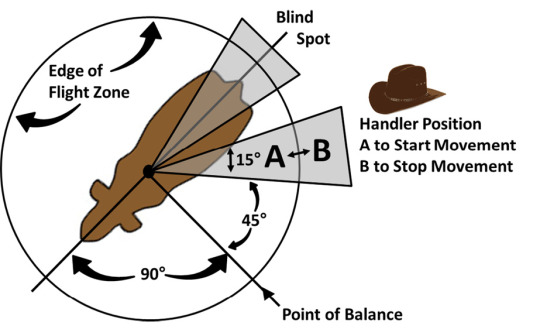
from grandin.com (highly recommend as a source of information about animal behaviour and welfare!!! temple grandin my idol since i was like nine i love her so. and i tear up when i think about how much she's done for millions of animals ;_; she's a genius and no lie revolutionized low-stress handling):

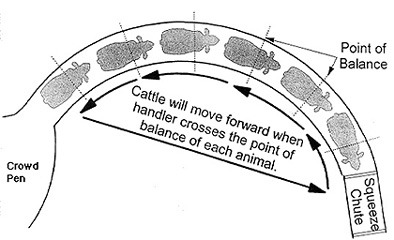
pet cows that get doted on enough to bond with people may not see people as a threat so the normal ways we use pressure zones to iinteract with cows don't necessarily do anything for them. you would lead them more like a horse, using a halter. or lure them with treats.
beef cows typically have little contact with people, often just processing (vaccines, preg checks, quick exam for any health problems) a couple times a year, so they can be very wild. doesn't mean they're aggressive, the overwhelming majority are non-aggressive but they have very large flight zones, so if you don't recognize that and approach too quickly, getting deep in their flight zone, that can get you into a dangerous situation where they get aggressive as a last resort. that said, they do usually still choose flight unless their calf is with them. "never get between mom and baby" applies as it does with any species
dairy cows are in between beef cows and pet cows. they interact with people regularly, several times per day, and it's respectful but not doting. kind of a business relationship with their handlers. they're not terrified of people by any means, but they haven't been, like, hand-fed treats to get over their instinctive wariness of potential-predator-like animals, and they know sometimes handling results in unpleasant experiences like medical treatment or pregnancy checks, so they avoid touch and have a flight zone, though it's small (and sometimes they'll calmly let you walk right up to them unrestrained, or approach you and lick you out of curiosity). very very rare to have an aggressive dairy cow (as in, one that attacks you instead of moving away when you're bothering them a little. really bothering them and ignoring body language when they can't move away is much more likely to get you kicked)
bulls are not docile. not every bull will be aggressive, but you should assume that every bull has the capacity to become aggressive with little provocation, and always keep a respectful distance and know your escape route if you have to be in a pen or field with them
cows love exploring with their tongues. any time you're in a dairy barn there's gonna be at least one friendly girl mlem mlem mlemming who won't leave you alone
adding on to the above, there is a slight caveat that you still have to be a LITTLE wary of friendly cows. 99% of the time they're just friendly but sometimes cows in heat will try to mount people. you don't have to be scared of friendly cows but if they're right next to you just keep them in your line of sight so you can move away if they make like they're going to mount. again, not common, never happened to me, but something to be aware of
signs of a happy, relaxed cow: lying down, chewing cud or eating, tail hanging down relaxed, moving slowly with her herd
signs of a slightly wary cow (you have entered the "pressure zone"): standing still/stopping what she's doing, turning towards you, ears turning towards you (watching the ears is a very good way of knowing what she's paying attention to), tail swishing or raised a bit away from body
signs of a distressed cow: vocalizing (they also moo for other reasons though), tail swishing, fidgeting/pawing/looking like she wants to move but doesn't know where to, freezing up and intermittently making erratic movements (back away a little)
signs of an aggressive cow: head down with attention on you, pawing ground, turning to show you their broad side. (turn sideways and calmly but swiftly walk away diagonally)
878 notes
·
View notes
Note
could u elaborate on "parrots make bad pets"? not disagreeing (far from it) just interested to see your take! looking to learn more about this
(i've gotten this ask before so please don't mind i'm just gonna paste a writeup i did a while ago)
There’s a blog run by an animal behaviourist who specializes in parrots that i really enjoy reading, she has a very good writeup on the state of companion parrots as an industry: The Inconvenient Truth About Cockatoos
so basically the average person usually cannot meet the needs of a parrot, especially medium and ESPECIALLY large species. they are long lived, extremely social and intelligent animals who are very demanding if you are their only companion. in my mind the most 'ethical' pet parrot setup is having some pairs of budgies in a dedicated bird room filled with foraging enrichment and doing some basic command training as a bird-human bonding activity instead of cuddles.
most pet parrots are hand reared or even hatched in incubators by breeders and are never given a chance to be raised by their parents, and virtually none stay with their parents until a natural weaning age before getting sold. which is wild considering it is fucking ILLEGAL to do that to puppies or kittens.
A parrot isn't really born wired for human companionship in the same way that a dog or cat is. they imprint on their parents which sets the blueprint of their kin, and they generally want to only form extremely close bonds with others of their kin. To get a very people-oriented parrot, it has to think it’s people.
This is different from the socializing practiced in raising cats and dogs or acclimating ferals to people. socializing means exposure to things so that the animal doesn't grow up to see the target as a threat, and ultimately that the target is something that can be very rewarding to spend time around. A dog raised with its mother and socialized to people still understands that it's a dog, it can get along with other dogs, but can also form strong bonds to people. They actually read both dog and human body language and legitimately have an awareness that we are different species.
The companion parrot is raised to think it’s people, and as a result many lose the ability to form bonds with their own kind. in fact the reason many breeders remove eggs or chicks from the nest is arguing that the parent birds don’t really know how to raise their chicks- because they themselves were hand reared and never learned how to parent from their parents! it seems that, like us, parenting isn't perfectly hardwired in parrots and they need to learn the skill from their families, oftentimes even staying to help their parents raise younger siblings!
That's why it's not at all uncommon for pair bonded breeding birds to be sold as a completely separate product from companion birds in many aviary operations. there's so many ads for people selling breeding parrots that fucking hate humans or are semi tame specifically listed for sale as breeders not as pets:



then their babies are bred for the pet market so they are taken either before or right after hatching to get hand reared and imprinted onto humans, because a parrot-bonded parrot just won't be as interested in forming those close human companionships you see in viral videos. this isn't the case for all aviaries, i want to acknowledge there are smaller scale breeders who have tamer breeding birds, but big producers can have borderline feral pairs and the point i'm trying to make is when you socialize a parrot to either the human world or parrot world, it's often at the expense of the other.
most trouble starts once the parrot begins reaching the age of sexual maturity. they stop being openly cuddly to most people, and will try to pair bond with their primary caretaker. It's not uncommon for this to lead to aggression towards other family members because parrots don't share partners, they can even do this to babies they are jealous of!

But a human can't become a suitable mate substitute for a parrot, and some of their mating behaviours such as regurgitating on you can seem straight up gross so the human then shuns the parrot and shuts down their advances. this can make your bird become very sexually frustrated that can lead to more unwanted behaviours and even health emergencies such as prolapse. we lead them on by stroking their chest and backs (only something bonded pairs do, you are essentially jerking off your parrot when you do this..) then reject them with no other outlet for their natural urges, and spaying/neutering isn't an option either! so they're stuck in a psychological purgatory of being unable to fulfill their instincts. and if they're in an understimulating environment and left alone for most of the day in addition to all that, frankly i think that's just an awful life to give to an animal we allegedly love!
we essentially alienate them, and when they don’t have people around to meet their extremely high social needs because you work a 9-5, even if there are other birds around, the lonely or frustrated human-bonded parrot can become depressed and self mutilate.

parrots that were left with their parents, are raised as parrots, and weaned at their own natural pace overwhelmingly do not exhibit these destructive behaviours.
a productive relationship with a pet parrot is one that fosters independence, not dependence, on the human companion. the most responsible parrot owners should strive to act more as a zookeeper to their parrot instead of cuddling it and creating a ‘velcro’ bird glued to the hip, and socialize with them via training sessions instead of letting their birds indulge in pair bonding behaviours like petting and preening which leads to sexual frustration and aggression or self mutilation.
Ultimately I believe any parrot hand reared and imprinted onto humans is some degree of psychologically damaged and suffers from the parrot equivalent of a developmental trauma, they have been robbed of a normal parrot life and it cannot be undone.
SO many parrot rescues are completely flooded with unwanted pets, many with tough behavioural challenges (for example it's not uncommon for parrots to be reactive to an entire gender, so that cuts the adopter pool immediately in half). and these patterns can be difficult to break especially without the aid of a behaviourist. and the thing still has another 40 years of life left in it but nobody wants to adopt because it's another "crazy bitey bird that hates everyone", has reached sexual maturity so it's no longer as friendly, and it's much easier to start from scratch so folks choose to just buy another baby and keep the cycle going.
And none of that even touches on the rampant poaching that keeps supplying the trade in many parts of the world. and that's why everyone should have domestic chickens or pigeons.
576 notes
·
View notes
Text
What men bred for.
3. Hunters and Preys
Alien Masters’ Earthling ethologist have discovered that Earthlings aka humans, especially males, like to connect beasts or raptors with themselves, such as covering their bodies with the furs of wild beasts, using the remains of wild beasts as body decorations, and even directly refers to himself as a beast, as if he wishes he was a beast. This is very strange behavior in their eyes. They were unable to determine why humans, who had developed a low level of civilization, would aspire to be equal to lower animals.

They also discovered that in addition to raising hounds, humans also raise cheetahs and falcons to assist in hunting, or keep lions and tigers as pets. Besides, another behavior is even more jaw-dropping to scholars: releasing wild beasts in a place called an "artificial hunting ground", and then hunting them for entertainment.
In the end, scientists put forward hypotheses:
1. Male humans desire to degenerate into lower-level beasts that obey wild instincts.
2. Beasts can assist in hunting or be hunted.
3. To summarize the above two points, it is a man’s nature to desire to be a hunter or a prey.

Behaviorists shared this theory with breeders, who randomly applied it to the development of new breeds of humans.
They replaced part of human genes with some genes from carnivorous beasts and developed several varieties. The genes of the selected beasts include lions, cheetahs, tigers, as well as eagles, vultures and other raptors. As for herbivorous beasts such as rhinos, elephants, bison, etc., we have yet to study how to apply it to humans.
These varieties of humans are very obedient to their wild nature and have more fighting and mating instincts than other species, but they are also more difficult to control and are difficult to apply in military applications. However, they are very suitable as hunting partners of their alien masters. They enjoy their inherited beast power and take pleasure in hunting prey.
Through modification helmet training, they can accurately stun their prey when they catch it. Even if the alien creatures are several times stronger than them, they will still achieve their mission, and even if they die as a result, they will be in a high degree of joy. It is understood that this is due to the positive effect of the dual bonus of the pleasure brought by obeying their master and the display of masculinity.

Due to the high casualty rate, upgraded hunter products like guards covered in latex and alloy armor have also been put into production. The orders are now full. As expected, as long as robots are made based on male humans, they will be very popular.
Not only that, alien masters think that raising animals for themselves to hunt is a good sport, so they also create species that can be used as prey based on the theories of behavioral scientists.
This type of breed is controversial because their genes for obedience to their masters have been "turned off" in a special way. When they see alien masters, they will resist or run away, which means they will be in danger if they escape into the wild. However, because now only males are produced, so there will be no problem of natural reproduction.
Some of these prey humans only maintain their original genetic makeup, while others add genes such as antelopes to make them more difficult to hunt. They were put into a "hunting ground" specially set up by alien masters to live freely. Those wealthy alien owners will take the hunter humans they raise to hunting grounds to hunt prey humans.

They may not necessarily kill these prey. Of course, it is legal to display them as specimens or cook and eat them. But they are more willing to personally tame these "wild" humans who don't know what obedience is into their own pets, just like how humans tamed wild horses in the past.
If the masters simply want to enjoy hunting humans, it is okay to return the prey to the hunting ground, or they can sell the prey. All-purpose livestock like wild earthlings are hot commodities whether purchased through normal channels or traded on the black market.
94 notes
·
View notes
Text

Well, it was either this, or review Netflix’s Twilight of the Gods. And that was trash. So I figured I’d rather talk about a good animated movie than a crappy animated trash fire.
The final Dreamworks film to be animated in-house, The Wild Robot is the story of servant robot ROZZUM 7134, a robot washed up by accident on a wild island in the Pacific Northwest. While perfectly suited for serving human households, serving animals in the wild is much more complicated. Most of the wildlife rejects her as a monster. When Rozzum accidentally crushes a goose nest, destroying the family aside from a single egg, she takes care of it until it hatches, and takes a new task: raising the gosling to be ready to fly south for winter. Fink, a red fox, agrees to help for the food and shelter he gets out of hanging around Rozzum.
Is the end of an era for Dreamworks? This is supposed to be the last movie they animated themselves. Future work will be outsourced. Which is sad, because Dreamworks is one of the great animation studios of our time. Their last few movies that I’ve seen looked really good, too. At least they’ll still be making movies, though not animating them.
This is a gorgeous movie, too! It’s a movie very much about nature, and so Dreamworks gave us stunning visuals of a natural world untouched by human hands (except for a couple of scenes where we see human society). There are a ton of animated movies about the outdoors, and even the wilds of North America, but most of them don’t look anywhere near this good.
Though I should say: this movie doesn’t shy away from depicting how rough nature can be. A large part of Rozzum’s development is learning that animals have to kill and eat each other to survive. This is nature! That’s how it works! Getting around that is a large part of some of the character development, but it’s not a matter of them all becoming vegetarian. It’s a fairly idealistic movie, but not that much. The viewer recognizes that the cycle of life will continue after the events of the film (albeit, with perhaps less vitriol).
There’s something interesting about the setting–yes, the movie is in the wild, but it’s heavily implied that this is some sort of dystopian future. It’s definitely some type of future setting if it has advanced service robots. There are little hints throughout: the migration path, for instance, shows a submerged bridge, and a city in a dome. Is this the result of a climate disaster? Was the island even originally an island, or was its attachment to the mainland also flooded? It does not say explicitly, though, as this movie is not about humans! It’s about a robot and several animals.
[Also! For once, this isn’t a movie where humans make everyone better. It’s not unusual to depict humans as bastards, especially in movies about animals, but recently I feel like so much fiction is about robots/aliens/gods/whatever learning the meaning of life because humans are oh-so-special in a way that no other species is. I found this take relieving, sort of.]
This movie doesn’t end with the goose migration; I half expected it to, given that’s how these movies tend to go. But no! There’s still a lot going on. And I liked that, because the movie wants to deal with the consequences of these events, and what happens to the characters left behind on the migration. That’s nice.
It’s not a completely original story, I should say: look, the idea of a robot learning how to be part of a family, or a character learning to be a parent–these are stories that we tell over and over again. So it takes work to make the story feel fulfilling. Luckily, The Wild Robot did the work–it’s not afraid to tackle dark subjects when the story demands it, it’s willing to show how rough nature is, and it develops its characters to be both likable and complex.
The Wild Robot is a fantastic film. See if you get the chance.
12 notes
·
View notes
Note
I noticed awhile back that my grandmothers new pet sneasel has a little splotch of white fur covering her upper snout. I’ve never seen a sneasel with that marking before and asked my grandma about it, and she told me that she was born with it. I thought it was super cool Pokémon could be born with little distinctions like that! Do you know of any other examples of that popping up? Or is my grannies sneasel unique?
yep, small differences in color and pattern are a common sight across most pokemon species! this is especially prominent in those popularly bred, since folks select for things like interesting coat patterns or unique colors. very domestic pokemon like eevee, rockruff, or the many 'starter' pokemon are some of the most common this is seen in, since such traits can be selected against in the wild, decreasing their occurrence, while they are often seen as desirable in pets.
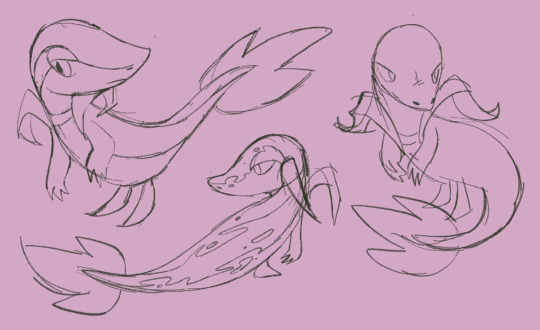
(a couple varieties of selectively-bred snivy, differentiated only by appearance- typical, broken stripe, and solid-color.)
white patches in particular are a common kind of pigment difference- leucism is the overall term for partial loss of pigment (different from albinism, though) which can include piebaldism. piebald organisms have blotchy patches of pigment loss across their body. you may also be familiar with vitiligo, which can look very similar to piebaldism, but are fundamentally different conditions.
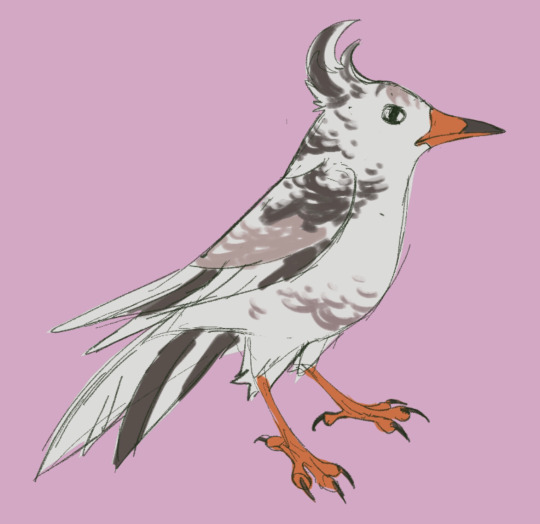
(a piebald staravia. leucism isn't a super uncommon sight in the wild, with birdwatchers in particular recording many instances.)
that said, i think i may have a specific explanation for why a sneasel would have a white patch, depending on where your granny's sneasel traces its ancestry. up until the mid-1800s or so, there were two varieties of sneasel- johtonian and hisuian (hisui being an older name for the sinnoh region). johtonian sneasel is the variety we have today, ice/dark type with black fur and red "feathers" which evolves into weavile. hisuian sneasel, on the other hand, was poison/fighting type with white and purple fur and "feathers", and it evolved into the now entirely extinct pokemon sneasler (alas, i don't think there's ever been a "sneaslest").

in the early 1800s, johtonian sneasel were introduced to sinnoh's frigid northern areas by people moving into the area. or, perhaps more apocryphal, even by "anomalies in space and time" as noted by a contemporary ecologist. while not exactly provable, there are indeed some records from the time of similar-sounding events, and it isn't like sinnoh nor johto are unfamiliar to their share of time-bending myths and phenomena, thanks to the legendary dialga and celebi. so, hey, maybe it was time travel. or both time travel and more mundane means. or maybe not time travel
these johtonian sneasel and weavile became an invasive species in the region, quickly acclimating to the area and coming into direct competition with hisuian sneasel and sneasler for food and territory. sneasler was known to breed infrequently- only once every few years- so they were particularly susceptible to lowering populations causing more collapse. the johtonian sneasel also proved to be more aggressive, and together with increasing human population drove the more solitary variety into smaller and smaller areas, until its eventual extinction, with the last known sneasler passing away in 1867.
however, during the time in which the two varieties did overlap, they uncommonly interbred. as a result, it isn't too odd to see sneasel/weavile from sinnoh today with patches or white or purple in their fur or "feathers", and veeery rarely even one that has one of the hisuian sneasel's typings (i REALLY need to expand on how typing works sometime soon). all that is to say- if your granny's sneasel or its ancestors are from sinnoh, the white splotch could be a result of hisuian sneasel heritage. it could also just be regular patches of pigmentation loss, as mentioned before, especially if the sneasel traces its ancestry outside of sinnoh.
265 notes
·
View notes
Text
Lightshell Duo

When stepping into Three Tree, Robert felt overwhelmed. Even at the docks, there were so many individuals and species that his upbringing in an isolated rat village could muster. He felt disorientated, and his heart began to race. His mind twisted like a snail's shell, and he was almost tempted to board a boat out of there, were there any availiable for such a task.
"You okay?"
A voice made its way into the snail path of the mind, and Robert's face darted. He was rewarded with a kind face: an otterfolk's, presumably around his age.
"I am now" he said.
He really could help but to stare into the ace of his saviour, and he immediately grew self conscious, looking aside. The fact that the otter snickered a bit only made the rat more embarassed. But, as much as he tried, he couldn't look away.
"Name's Shae" the otter said, extending a paw.
Carefully, Robert shook it, with as much reservation as if it was covered in thorns or venomous.
"R-Robert."
"Well R-Robert, may I invite you in? I know a socially anxious face when I see one."
Robert was distrustful, as typical for a ratfolk. But really, what were his options? He was hoping to stay at an inn or some other hospitable place, but even that might have had too many people for his comfort.
"I'd be delighted" he said, trying not to stutter as before.
***
"Make yourself at home!" Shae said enthusiastically.
Stepping into the raftboat, Robert was amazed by what the open door revealed. So many trinkets and treasures, and even a few familiar possessions like clam shells. He was truly feeling at home already.
"Wow, you have so many things."
"Knew you'd like it. I mean, I know ratfolk like their possessions, so I just assumed."
Robert could feel some shyness from the otter, and that made him more relaxed. They were on more equal footing now. His curiosity was drawn to some of the possessions, which glowed with the might of thunder while still being trapped.
"What are those?" the rat asked.
"Oh, those are spells I caught. You see, we otterfolk store magic in our blinkies, to remind ourselves of the wild rides we have."
He grabbed one, a pot incandescent with blue.
"Here, this was when I chased the typhon python. Over there was when I chased the sun hawk itself!"
"So amazing" Robert said, "I came here to study the weaving of other animalfolk, and your ways are helping my research a lot!"
"Glad to hear it."
"It's only fair I share some of mine."
The rat laid down his sack, and pulled out his most precious heirloom.
"Here, this shell was passed down by my family by generations. Each one of us itterates upon its mind spell, so it becomes easier to meditate and clear the mind. Some of us have also added some other spells of its own. I'd like to add mine eventually, and your trinkets inspire me."
"Oh?"
"Would you like to show me how you gather your spells?"
***
Robert knew it was insane, and yet it was still prefferable to the raucous of the city.
The waves crested as Eluge's influence shifted the wild waters, forming a storm above.
"Ready?" Shae asked.
Robert nodded, and he steered the boat. It was surprisingly easy to learn, and he hoped that the otter's weaving was just as easy as well.
Shae extended his arms, feeling the wild currents in the waters and air. Lightning struck, and he didn't hesitate: wild currents struck his paw, each a conduit, and he released it into the snail shell. Then just as quickly he sealed it shut, and relied on the already existing weaving to prevent it from exploding.
The result was a brilliant blue light framed by a solid spiral. Both Shae and Robert were amazed, brought together by this shared item
“Lightning and snail as one!” cried the rat. “It’s so beautiful!” the otter gasped in awe.
Robert was enraptured by joy, and blurted:
"Not as beautiful as you."
#mtg#magic:the gathering#magic: the gathering#magic the gathering#fanfic#fanfiction#gay#furry#lgbt#lgbtqiia+
11 notes
·
View notes
Note
Okay, first sorry for presuming you didn't work with children - the way you talked about them at first was really oversimplificated, easy to misunderstand.
About "using Third Wolrd countries as props", sometimes they pop in the middle of an argument out of the blue and with no nuance at all. Like "don't eat quinoa, eat meat!" - we export meat and the contidions of workers in slaughterhouses are AWFUL too. We plant too much things to export (both for animal feeding and people), and for the exchange farmers don't plant local crops anymore, prices rise, and stuff. Not to mention mineration. Almost everything produced here, specially most brute products, come from exploitaition. I don't think individual buyers interfere much, maybe organized though.
Or the parrot thing. Shelters here are full too, to the point of workers saying "please find a new home for this lost bird yourself." (Happened to a co-worker that found a lost, absolutely healthy, and clearly imprinted parrot).
And to be honesty the discourse of "undomable parrots" "the WILD!" sounds also fetishing to me. You see? It is still a open question. You say what you want about husbandry, but how *we* feel is still open. What Europeans did to parrots is fact, what we make from it? It's *our* turn to discuss and decide.
These are just random ideas. Idk how you will receive them.
Also, I'm amused by the idea that some comments threw "imagine until they know about unicorns or dragons" or "they are adad". I'm totally for imagination, and if I made understand I'm against it I'm sorry. I'm not *against* whatever dino toys, I just *wish* we had more variety than JP bootlegs, including pleasant and accurate critters.
What I will say to you is that my response to parrots is very US-centric because that is where I live and have experience and knowledge about the exotic pet trade on a first hand level and because that is what OP specified they were speaking on in the first place.
I am not speaking for your country because I have not lived there and you haven’t disclosed which country you reside in meaning I can’t give any assumption to what the situation is there.
The state of parrots in the pet trade in the US is that anyone can buy as many parrots of whatever species they want as long as they pay a lot of money to the seller. The seller very rarely does any kind of background check to ensure the buyer even knows what they’re doing or what the bird eats, they take money and they give bird. There is often no way to verify that the parrots were bred for health and good temperament, or even that they weren’t bred to parents or siblings. There is often very little transparency about what methods they were imprinted with, there are several types of imprinting and some result in a nightmare bird and others result in a very calm bird.
Because you can profit off of selling large quantities of parrots with unique patterns or colors, there are a lot of people breeding them in unethical ways to do so cheaply while selling at the highest possible price. This, much like the human labor and land exploitations you’re referring to, are just the end result of capitalism. Rich white countries like things cheap and convenient so they imperialize and leech off of countries they intentionally sabotage financially so they have to stay in line.
Because of the mindset Americans have towards convenience and instant gratification, they go to a store, see a parrot, buy a tiny cage, and bring the parrot home with a bell toy, dowel perch, and just whatever bag of generic “parrot food” they happened to grab on the way out. Then the parrot is loud or bites or never talks so they cover it with a sheet, release it into their backyard, or force it onto an already overcrowded rescue.
Every type of parrot has unique needs, but they at the very least should be able to fly, have others of their species to interact with, and bonding activities that don’t frustrate or upset the bird. So many parrots in the pet trade here have never actually felt the sunlight aside from through a window. So many parrot cages are designed in ways that lead to damaged feathers. So many parrot cages have no room for the bird to stretch their wings or even have a private place to hide.
My stance on parrots is at the bare minimum people should have to go through a similar process falconers have to go through before getting their first raptor. Falconers here must build an enclosure that meets guidelines approved by the state department of wildlife, they must pass an exam regarding the natural history, husbandry, equipment, and training of the animal. They must study under a master falconer for two years before becoming fully independent in the sport. If we held people to this standard and required it before they could buy a parrot, I would have far less complaints I’m sure. But that isn’t the case. Every parrot I’ve worked with was a rescue, and every one of their stories was heartbreaking. Yes, true, people will neglect any given animal because people can be cruel, but the vast majority of parrot owners are still keeping them in terrible caging, still keeping them all by themselves, and it’s still greatly encouraged to breed more and more which just gets parrots killed or dumped at a rescue.
37 notes
·
View notes
Note
So, I was looking at animals native to Texas, and it says that Japanese macaques were introduced to a sanctuary in Frio County.
I was wondering if you knew why that was done? I see that Japanese macaques are listed as LC on the conservation list, so I'm assuming it wasn't for conservation efforts, but I see no other reason to introduce them to a whole new area like that.
Its actually an interesting story. Born Free Primate Sanctuary is one of the worlds largest monkey sanctuaries, and right now they are at capacity housing 600 individuals on 186 acres.
The sanctuary started in the 1970s when a rancher whose primatologist daughter was studying macaques in Japan heard that as a result of humans feeding them, the macaque population had multiplied to the point where many had migrated to Kyoto and were becoming problem animals for residents. The Japanese government was going to cull the population, which is why Edward Dryden offered to take 150 macaques from Japan to live on his Texas ranch.
Now to be honest, this probably wasn't ideal. This was someone with a soft spot for animals who just wanted to help, but didn't have experience caring for primates. Luckily, a lot of land and presumably consulting with his daughter who was somewhat of an expert means that the relocated macaques did well in Texas despite needing to adjust to the climate.
Of course nowadays, you can't just have a couple hundred monkeys even if you're doing a pretty good job of looking after them. The mid 90s saw a huge fundraiser to buy more land for the sanctuary, and in 1999 the Animal Protection Institute took over managing the sanctuary to help them expand their reach so that more monkeys could live and thrive on the expanded grounds.
This was a terrific move, because now many of the sanctuaries residents are victims of the pet trade and wildlife trafficking who are able to have a chance at a better life. Texas is one of the worst states for exotic wild animal "pets", so the fact that this sanctuary exists to take them in and educate people on the damage of owning pet monkeys is fantastic. They are dedicated to education and to providing the best in captive quality of life. Despite them being referred to as a "free roam" sanctuary above, the residents are in enclosures to contain them to the sanctuary, the biggest of which is 52 acres! With an enclosure that massive, the monkeys are living essentially in nature just with the necessary supports from samctuary staff.
Additionally, to protect the residents (many of whom were traumatized from being pets, roadside attractions, and test subjects) the sanctuary is not open to the public. However, you can still see the monkeys online through the sanctuaries website and social media. They have 11 different species from descendents of the original macaque population to vervets and baboons!
Going in to research this place I was worried it would be bad, but I was happy to be surprised by a history of dedicated primate love. You can learn more and support the sanctuary through their website (linked above). 🐒💖
It should be noted Born Free is an international anti-captivity animal rights organization and while we support Born Free Primate Sanctuary we do not support the entirety of Born Free's many campaigns.
#inquiring minds want to know#mod j#born free primate sanctuary#born free sanctuary#macaques#texas#officially cute
83 notes
·
View notes
Text
Bonus Lorepost: Nightcats
I know the poll results chose magic weaving, but since I wrote it already, and just feel like sharing it anyway, here is the lore dump about Nightcats too. You can find the magic weaving post here if you missed it!
I wrote this from two separate viewpoints, that of a human researcher studying them and below the cut, a nightcat speaking about their own kind. Enjoy!
human pov
On their appearance: Small, semi-bipedal catfolk. Fur colour is a dark, midnight blue, with brighter blue markings. Long fluffy tails, sharp retractable claws. Females tend to have more hair than males. Most will remain unclothed, but a few wear simple loincloths or wraps. The reasons for this are so far unknown, speculation varies between mating displays, hierarchy within groups, or possibly a simple matter of preference.
On their behaviour: Intelligent but reclusive, they are rarely seen by anyone. Known to herd rats as humans would sheep. Males are slightly larger, and tend towards more openly aggressive behaviour. Females prefer stealth over strength, but if cornered will fight as fiercely as the males. Though they have claws and teeth, many also carry weapons fashioned from rocks or bones.
On their habitat: They are believed to be native to the Glistering Forest in Trizes, north of the Snowy Wastes. Their territory overlaps somewhat with that of the white wildcats. From the few observations made so far, there seems little conflict between the two species, but details are scant. It is possible they recognise each other as kin, as one researcher theorises (Atwood etc, 1903).
On their culture: What cultural or spiritual practices they may have are largely unknown to us, though there are suggestions they may follow a simple kind of druidism. The one artefact of their race known to us appears to be a wand-like item, primitively carved from wood and marked with strange sigils. Whether this means the creatures are capable of magic use, or that it is simply a toy or ornament, we have yet to discover.
On their reproductive habits: It has been suggested that the catfolk have a third physical sex (Johns etc, 1918) in addition to male and female. While this is a possibility, many dismiss it as misinterpretation of the creatures’ appearances. None have managed to get close enough to examine them to confirm either way. To summarise the Johns study, the long haired are presumed females, the short haired presumed males, and those with short body hair and long manes are thought to be the third ‘kimale’ sex. Others think this may be no more than genetic variance, or possibly a representation of individual status. So-called ‘kimales’ have been known to perform most child rearing, suggesting a position similar to that of a wet nurse.
Nightcat pov
We cats are sleek and beautiful. Furless eyes are too weak to see our colours. We are many glorious shades of night sky, covered in hidden stars. Cloth is for keeping catlings warm, or modesty of shecats carrying them. Sometimes for holding things to keep our claws free. Our tails are long and swishy. They keep us steady and serve as extra defence if we are surprised by enemies.
We are clever. Clever enough to know the furless are dangerous and should be avoided. You will not see us if we do not want you to. The scurriers belong to us and are well protected. Trophies from our hunts make good extra weapons, when we want something different than bite or scratch.
All of us are fierce fighters, but not all like to fight. Some are sneaky, or gentle, or creative, or more clever than the rest. Shecats often like to sneak or think, but not always. Hecats often like to fight or build, but not always. Theycats often make good Alits or Runecats, but not always. But all cats have skill, and are good cats.
We live in the snow trees, far from the furless and their kind. The daycats live near, and are wild enough to keep bad furless away. They are not us, and we are not them, but we are friends. We were not always such. Once we fought over food and trees, and many cats became still. Then the furless came to take our trees, and nightcats joined with daycats to drive them away. Nightcat and daycat have been friends since then.
Sometimes a good furless appears in our trees. We do not mind the good furless, but they are few. A good furless can become catfriend, if they learn well enough and behave more like cat than furless. Most furless do not have the patience and cleverness for this.
We live in aliteras, of no more than thirty cats. When an alitera becomes too big, a new one is made with a new Alit. The Alit is our leader, who understands the scurriers and trees and snow better than the rest. The Alit must be the best cat, their role to all of us like a parent to their young. A good Alit is fair and kind, loved by their own alitera and respected by others. A bad Alit is challenged by the rest of their alitera, sometimes even made still, and a new Alit is chosen.
Some cats talk with spirits, and can work with them to make strange things happen. These cats are called Runecats. Though Runecats are much loved and respected, they are also apart from most cats. We have heard some furless are like Runecats, and wonder if they are apart also.
Catlings are made when a shecat and a hecat bond. The shecat carries them until they are born, protected by the hecat, and a theycat will then raise them. Once catling becomes full grown cat, it becomes she-, he-, or theycat. Sometimes it is not so obvious which a catling will be, and those ones are simply cats until it becomes clear.
3 notes
·
View notes
Note
Hey chicken! First of all I want to say how much I love your blog and your energy! You're one of the nicest people on here.
Now for the question, I was practicing talking to a few plants I had on my property to see what they'd be good at and I felt like I was getting a lot of weird abstract answers vs when I'm actively out foraging I'll pick up "vibes" sort of in the way that was described in your post you made on asking ingredients. How do I discern what's my lizard ADHD brain and what's actually happening? How do I tell if I'm picking up actual "vibes" when I'm out foraging or if it's all malarkey?
Thanks!!
Hello! Thank you for your kind words.
The boring answer is that I suspect there is no "magic key" that will automatically and without fail indicate whether or not you are engaging in genuine psychism.
There are many issues here:
Plants that live on your property have one commonality that makes them different from foraged plants; they are on your property. Plants that are within your domain or under your purview may indeed answer differently than plants which are not.
Domesticated species may behave very differently from their wild cousins. A species that likes you will react differently from a species that does not. Plants on properties at which you have lived for decades will react differently to plants on properties you have just moved into. Plants that feel neglected, versus plants that feel loved. And so forth.
To confuse the issue even further, one specific oak tree might like you and provide you with many helpful vibes; and another member of the same species might dislike you and refuse to be helpful.
So there are many, many reasons why X plants in Y location might all be behaving differently; not the least of which is "we don't want to talk to you, so yes it is your lizard ADHD brain filling in the blanks."
The problem with trying to set up a series of locks and keys for what "counts" as psychism is that inevitably you're going to be wrong, but if you set up a system for yourself where if condition X, Y, and Z are met then you are totally right, for real this time, you seriously risk falling down a rabbit hole of self-delusion.
The proof has to be in the pudding. You can get a vibe and go fact-check that against herbals, and see whether or not you're right. For our metaphysical purposes, this means actually seeking aid from these various plants in spellwork. Do the plants actually, noticeably help your spells, or not? If you cast the same spell without their involvement, does it work just as well, or work differently?
And then, of course, the whole issue is further confused if the experimenter doesn't really know how to cast a spell very well, or doesn't know how to properly evoke plant allies. It all gets quite tangled up.
But I think that's more or less got to be the way it is: judging everything based on its own situation, in its own context, based on its own results. Let everything be an experiment, and note your own successes. Avoid creating systems that let you prove to yourself you're right based on omens. Rather, get to know the plants as friends, and see whether their presence in your life alters your life - or not.
29 notes
·
View notes
Note
Where does your opinion lie on the matter of sex and gender and the relationship between biological sex and gender roles/ gender prescriptions as a social construct.
We don't ask the same questions about tigers, peafowl or bees.
Sex-based behaviors (gender) are real. We can see them in other primates in a way that mirror ourselves.
Nobody wonders whether the peacock grows feathers and shows off for the females because of social expectations.
Nobody wonders whether the female mantis eats her mate because she's "fIgHtInG tEh PaTrIaRcHy!"
There are very real human sex-based averages that are derived from the evolution of our species, the pressures it has been under, the variations that have been most successful, and what each sex has needed of the other.
This means that, for example, boys are more inclined towards thing-based activities - careers, toys, pasttimes - while girls are more inclined towards people-oriented activities... on average. This is replicated cross-cultures.
Of course there are girls who want to fix trucks for a living, and boys who want to be kindergarten teachers. They are still girls and boys who will grow up to be women and men. And nobody should get in their way.
What you like doesn't define what you are. But what you are is still statistically significant, because it offers societal-wide information. The society-wide trend doesn't predict or define individuals, and individuals don't negate a society-wide trend. Which many people don't seem to understand.
Here's a good example. Average intelligence of women and men is the same.

While the means are the same, male intelligence is more variable, so you'll find more highly intelligent men at the higher end, and more really stupid men at the lower end. You possibly know at least one highly intelligent woman who is smarter than most of the men you know. That doesn't change the societal-wide trend.
This is simply a fact. You can get angry or offended, but it doesn't stop being true.
And in a similar way, men and women having different average interests, tendencies and behaviors - e.g. women tend to be more socially-oriented, men tend to be more action-oriented - makes sense in the light of evolution and the demands and pressures our primitive ancestors were subjected to by the natural world and the battle for success. And the demands males and females put upon each other.
Nobody gets angry when we mention that humans are prone to pareidolia - interpreting or perceiving meaning where it isn't there, such as a smiling or pouting "face" in the front end of a car. Evolutionarily, it makes sense. In the same way, noticing that sex-based differences are real might make people angry or offended, but that offence doesn't matter as far as what is real.
The idea that "gender is a social construct," then is nonsense. It's a denial of evolution itself, a denial of the way we came to be as a species. To suggest that the same tendencies we see in our primate ancestors - e.g. maternal instinct in female chimps carrying sticks - is some kind of social brainwashing requires believing that those tendencies disappeared from humanity's evolutionary line, then re-emerged, identically, as socially imposed roles.
That's creationism. Actually it's worse. Xian creationism simply asserts that everything is as it always was. Everything was created in its current form. Gender creationists must assert that humanity wound backwards to a blank slate state, then had the wherewithal to form a conspiracy of oppression to reinstitute the same vestigial traits back into society. Oh, and this happened either sufficiently far back in our development to precede or dispersal throughout the lands of Earth, or coincidentally every society on Earth came up with it more recently. Gender social constructivism is evolution-denying creationism.
This level of magical thinking makes me long for the days where Xians rambled about the laws of thermodynamics that they don't understand. The talking snake and donkey seem almost reasonable.
The domains that produce this kind of thinking are not science-based, they're political and ideological, such as Gender Studies. People in these fields don't study biology, they don't study demography, they don't study anthropology. They don't even study basic statistics.
Feminist theory, which is where "gender is a social construct" was really incubated as the justification for patriarchy theory, is not scientific, and is opinion (grievance)-based, not evidence based. One of the most tragic examples of this is the John/Joan case, where David Reimer was raised as a girl after a botched circumcision.
https://en.wikipedia.org/wiki/David_Reimer
Finally, on 14 March 1980, Reimer's parents told him the truth about his gender reassignment, following advice from Reimer's endocrinologist and psychiatrist. At 14, having been informed of his past by his father, Reimer decided to assume a male gender identity, calling himself David. He underwent treatment to reverse the reassignment, including testosterone injections, a double mastectomy, and phalloplasty operations.
[..]
His case came to international attention in 1997 when he told his story to Milton Diamond, an academic sexologist who persuaded Reimer to allow him to report the outcome in order to dissuade physicians from treating other infants similarly. Soon after, Reimer went public with his story and John Colapinto published a widely disseminated and influential account in Rolling Stone magazine in December 1997. The article won the National Magazine Award for Reporting.
This was later expanded into The New York Times best-selling biography As Nature Made Him: The Boy Who Was Raised as a Girl (2000), in which Colapinto described how—contrary to Money's reports—when living as Brenda, Reimer did not identify as a girl. He was ostracized and bullied by peers (who dubbed him "cavewoman"), and neither frilly dresses nor female hormones made him feel female.
Human nature is not as malleable as some people would like you to believe. You are a sexed being. How you "identify" can't change what you are. That doesn't mean you can't do what you want, express yourself how you want, but you are what you are.
This is only controversial to the people who want to push the story of humans being infinitely moldable, existing as divine gender thetans imprisoned in vulgar meat bodies.
Now, it is true that some of these tendencies and behaviors will tend to be limited or shaped by the culture of the society. But they're not constructed wholesale. For example, Japanese society is highly structured around honor. So male and female behaviors will tend to be expressed through those norms; male aggression and female agreeableness may take unique culturally influenced forms. But they're not created by them. Societies which have different pressures - e.g. in the freezing north regions of North America, vs the arid deserts of Africa - will unsurprisingly produce different cultural expectations upon men and women. Recognizing that isn't a form of bigotry, it's an acknowledgement of reality.
There's a reason stereotypes exist - because there is an element of truth in there, even if it's a tiny seed. If there wasn't, we wouldn't be able to recognize or apply them. They exist because humans are prone to cognitive shortcuts, as we have a lot of information to process and making choices or decisions doesn't always allow one to sit down and think things through methodically. Our ancestors wouldn't have had the time, and probably wouldn't have had the cognitive power.
"Girls like dolls, boys like trucks," is a very dirty shorthand. At its core is a demonstrable truth regarding societal-wide averages and tendencies that takes several paragraphs to explain more accurately (and some people will still be determined to be pissed off, no matter how you frame it). But stereotypes are not all we are, and there's no reason not to acknowledge them, but put them aside, or try to. And certainly no reason to use them to structure society itself, "fixing" girls who like trucks and boys who like dolls.
I don't know if that answers your question. Suffice to say that just as a scientific view of the world makes a god unnecessary, a scientific view of the world make social constructivism (postmodern creationism) unnecessary. We can explain the world without resorting to magic or conspiracies.
P.S. Reminder: social constructivism is a social construct.
#ask#gender is a social construct#social constructivism#gender stereotypes#sex based differences#sex differences#religion is a mental illness
50 notes
·
View notes
Note
I love the amount of thought you put into the fish tags. is there any reason you didn't go with megafauna for safety?
💚🐟 Thank you! Hazards of being a biologist working in salmon recovery, haha.
I actually found the post twice on different reblog chains, the second time with 2 more social poll questions, I'm guessing that's the one you noticed given the swim club safety talk involved!
The first time, according to the post rules, I randomly generated fish and was immediately excited given ~my whole deal~, but also a bit annoyed by the vagueness. A test refresh gave the result dugong-precision down to species. Clear as day. Fish could mean so many different things-it isn't even a valid cladistic group of relatives! I could get rowdy with that and claim any vertebrate, but that hardly seems in the spirit of the thing.
The photo was a clownfish but I'm not wild about being one of those‐or any reef fish, honestly. I'd want decent swimming power. And I'd prefer to be a saltwater fish, just in terms of environments I most want to explore. Something native to my area should be well adapted. So I did think of salmon, it would be undeniably funny at work. I also toyed with the idea of using my power professionally, to actually test the swimming abilities of whatever species against culverts and dams and fishways. But that's getting back into freshwater. Maybe as a salmon I could choose sea vs river phase each transformation?
Mostly I want to use my fish form to explore in the ocean. And, like, professionally, I'm very aware of water safety. Being able to breathe free from logistics of scuba or reliance on a boat is incredible for dive depths and times! The largest remaining environmental hazard as I see it is being a potential prey item. And at 200ft or whatever you can't just transform back! You have to stay a fish until you make it to the shallows, or at least the surface. So I think us aquatic folk would be wise to stick together, especially since we can't casually transform in the street either.
But now that you mention megafauna, I am considering sharks. I don't know that I want to be HUGE, but I could certainly be large enough to hold my own out there.
Given freedom from the generator, I think a sea lion would be a pretty sweet deal. I'd have to come up for air and still look out for some things, like orcas, but I'd have pretty good diving and agility in the water. I was imagining sea lion people as a very important part of swim club!
#Thank you anon I love to go on a biology inspired hypothetical!!!!#Which is why my tags were so thought out in the first place haha#I hope you see this I know it's been a hot minute#Swim club for life
3 notes
·
View notes